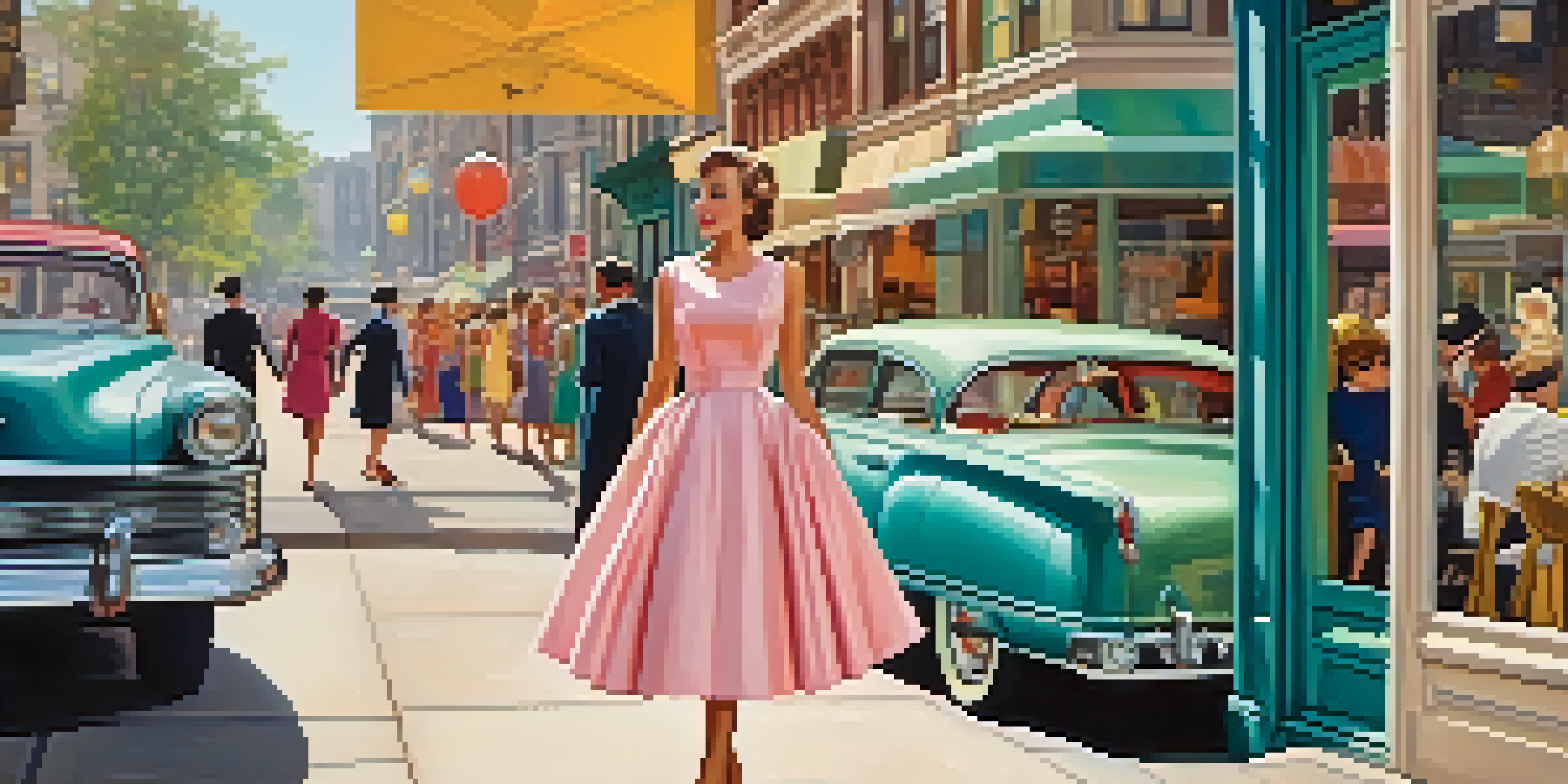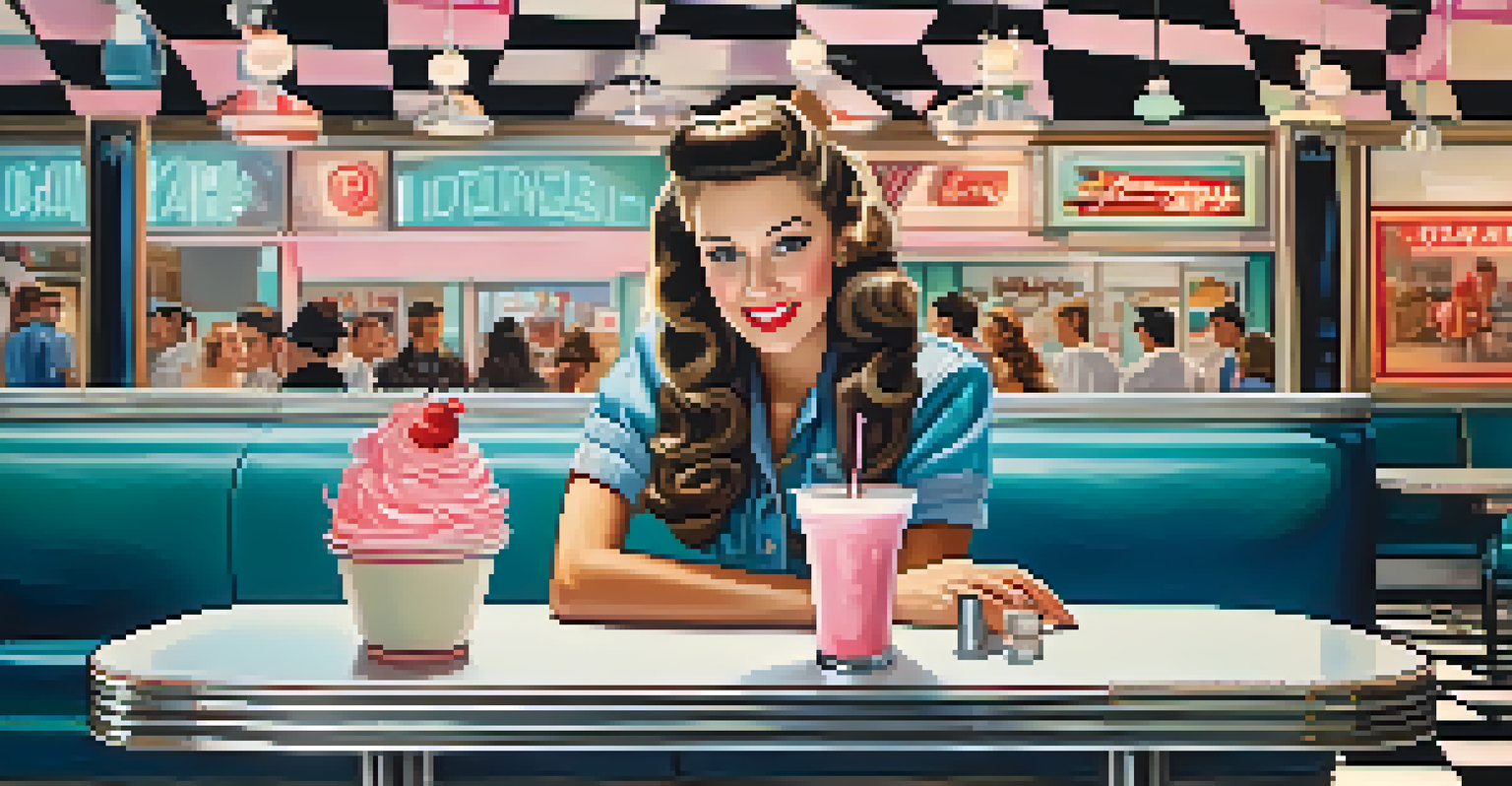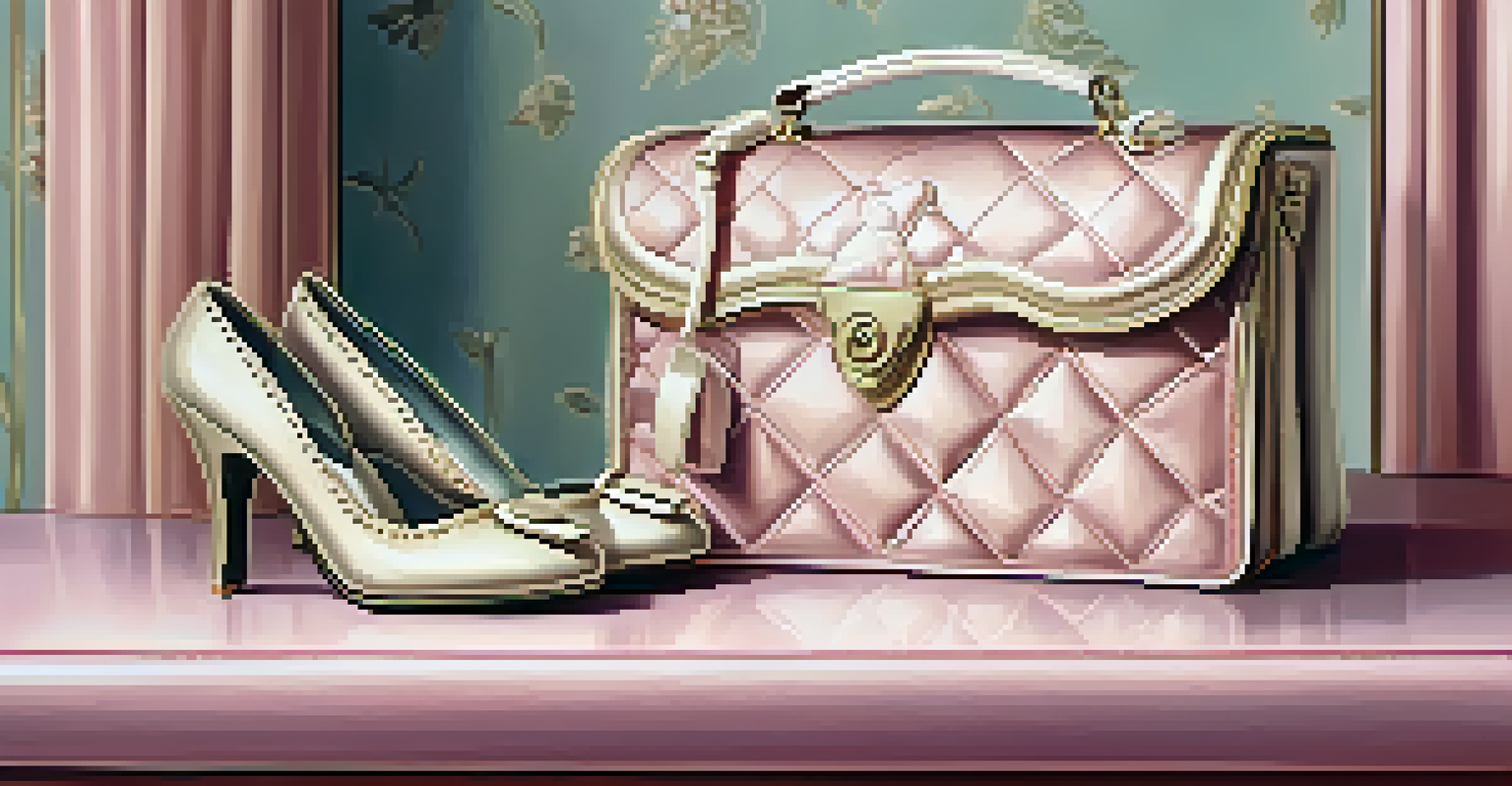The 1950s: Iconic Styles That Defined Post-War Fashion Trends

The Rise of the New Look: Dior's Revolutionary Influence
In 1947, Christian Dior unveiled his iconic 'New Look,' which transformed women's fashion. This silhouette emphasized an hourglass figure, featuring a cinched waist and full skirts that flowed elegantly. The New Look was a breath of fresh air after the utilitarian styles of World War II, allowing women to embrace femininity in a post-war world.
Fashion is the armor to survive the reality of everyday life.
Dior's designs were not just about aesthetics; they represented a cultural shift. Women, who had taken on numerous roles during the war, were now encouraged to celebrate their femininity and reclaim their traditional roles. This revival spurred a fashion movement that celebrated opulence and the joy of dressing up.
As a result, the New Look became a symbol of luxury and sophistication in the 1950s. Fashion houses around the world began to adopt similar styles, and the influence of Dior's vision spread far beyond the runway, shaping the way women dressed in everyday life.
Rock and Roll: A Cultural Revolution in Fashion
The 1950s were not just about elegant dresses; they also saw the rise of rock and roll, which brought a new edge to fashion. Icons like Elvis Presley and Chuck Berry influenced youth culture, leading to a more rebellious and casual style. Leather jackets, denim jeans, and graphic tees became staples for young people who wanted to express their individuality.

The rock and roll movement also sparked a transformation in social norms, challenging traditional gender roles. Young men and women embraced styles that embodied freedom and defiance, moving away from the conservative looks of the previous generation. This period marked a significant shift in how clothing was associated with identity and lifestyle.
Dior's New Look Revolutionizes Fashion
Christian Dior's 'New Look' in 1947 redefined women's fashion, celebrating femininity and luxury after the utilitarian styles of World War II.
As rock and roll took center stage, fashion became a form of self-expression. The music and the style that accompanied it created a cultural phenomenon, blending influences from various subcultures and setting the stage for future fashion revolutions.
The Rise of Teen Fashion: A New Market Emerges
The 1950s were pivotal in establishing teen fashion as a distinct market. No longer confined to hand-me-downs or adult styles, teenagers began to demand clothing that expressed their youthful spirit. Brands started to recognize this demographic, creating lines specifically for the younger crowd, such as poodle skirts and saddle shoes.
Style is a way to say who you are without having to speak.
This emergence of teen fashion coincided with the rise of cinema, where stars like James Dean and Audrey Hepburn became style icons. Their on-screen personas influenced the fashion choices of a generation, making items like denim jackets and chic dresses highly sought after. The connection between film and fashion became stronger than ever.
By catering to the tastes of the youth, designers helped forge a sense of identity among teenagers. This shift not only changed the fashion landscape but also laid the groundwork for the modern fashion industry, where youth culture continues to drive trends.
Functional Fashion: The Influence of Sportswear
The 1950s saw a significant rise in sportswear, which blended comfort with style. As leisure activities became more popular, designers like Claire McCardell introduced practical yet fashionable pieces. Items like capri pants and simple shift dresses allowed women to move freely while still looking chic and put-together.
This trend reflected a broader societal shift towards a more active lifestyle. As people began to prioritize wellness and fitness, clothing adapted to meet these new demands. The influence of sportswear reached beyond just athleticism, permeating everyday fashion and making it more accessible.
Rock and Roll Shapes Youth Styles
The rise of rock and roll in the 1950s brought a rebellious edge to fashion, with young people embracing casual styles that expressed their individuality.
The appeal of sportswear also democratized fashion, as it was often more affordable and versatile. This era marked the beginning of casual chic, where comfort could coexist with style, influencing how people approached their wardrobes for decades to come.
Accessorizing the Look: Iconic Handbags and Shoes
Accessories played a crucial role in defining 1950s fashion, with handbags and shoes serving as essential components of any outfit. Brands like Chanel and Louis Vuitton created timeless pieces that became status symbols, often seen on the arms of well-dressed women. The elegance of a well-chosen handbag could elevate even the simplest dress.
Footwear also saw significant evolution during this decade. From classic pumps to the rising popularity of ballet flats, shoes became an integral part of the fashion statement. Women embraced variety, experimenting with different styles that complemented their outfits and expressed their personality.
This focus on accessories highlighted the importance of details in fashion. A chic handbag or stylish pair of shoes could transform an entire look, showing that true style lies in the thoughtful curation of every element, no matter how small.
Color and Print: Bold Choices That Made a Statement
The 1950s were characterized by vibrant colors and bold prints, which helped to create a lively fashion scene. Pastels and bright hues were popular, often seen in floral patterns and polka dots that added a playful touch to garments. This shift towards color mirrored the optimism of the post-war era, as people sought to express joy and positivity through their clothing.
Prints became a key component of personal style, allowing individuals to showcase their tastes and preferences. From gingham to stripes, the variety of patterns available meant that there was something for everyone, regardless of their fashion sense. This diversity encouraged experimentation, with people mixing and matching to create unique looks.
Hollywood Icons Set Fashion Trends
Hollywood stars like Marilyn Monroe and Grace Kelly became style icons in the 1950s, influencing everyday fashion and establishing the connection between celebrity and fashion marketing.
Ultimately, the vibrant colors and prints of the 1950s left a lasting legacy in fashion. They paved the way for future trends, reminding designers and consumers alike that clothing can be a canvas for creativity and self-expression.
The Influence of Hollywood: Icons Who Shaped Trends
Hollywood played a significant role in shaping fashion trends during the 1950s, with movie stars becoming the ultimate style icons. Figures like Marilyn Monroe and Grace Kelly inspired countless fans with their glamorous looks, often setting the standard for beauty and elegance. Their influence extended beyond the silver screen, impacting the everyday fashion choices of millions.
The glamour of Hollywood was not just about the clothes; it was about the lifestyle that accompanied them. As these stars were often portrayed in luxurious settings, their outfits became aspirational, making the fashion industry more intertwined with the entertainment world. This connection helped to elevate fashion to a form of art and cultural expression.

As a result, the 1950s marked the beginning of the celebrity endorsement culture that we see today. Designers recognized the power of celebrity influence, leading to collaborations and fashion lines inspired by Hollywood's most beloved figures, forever changing the landscape of fashion marketing.
Legacy of 1950s Fashion: Influences Still Felt Today
The fashion trends of the 1950s continue to resonate in today's styles, showcasing the decade's lasting impact. Elements such as fitted silhouettes, playful prints, and a focus on accessories have made comebacks in various forms over the years. Designers often draw inspiration from this era, blending vintage aesthetics with modern sensibilities.
Furthermore, the 1950s established the foundations of contemporary fashion marketing and branding. The rise of teen fashion and celebrity endorsements has evolved, but the core ideas remain relevant as brands strive to connect with consumers on a deeper level. The lessons learned from this decade still inform how fashion is presented and perceived today.
Ultimately, the 1950s were a defining moment in fashion history, setting the stage for future innovations. As we continue to celebrate and reinterpret the styles of this iconic decade, the legacy of the 1950s remains a testament to the power of fashion as a reflection of culture and society.